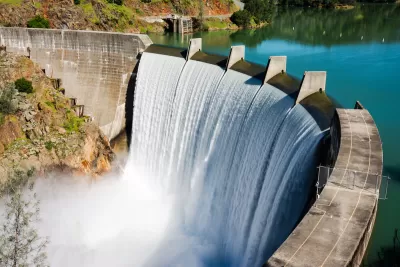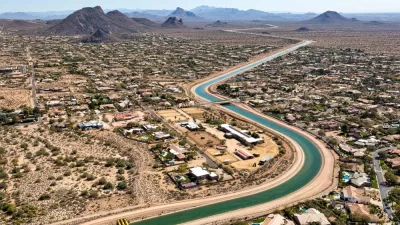A wet winter will replenish the state’s snowpack and reservoirs, but could also increase flooding and wildfire risk in some areas.

An update to California’s Water Plan provides a blueprint for upgrading the state’s water infrastructure to ensure sustainable water systems as the shifting climate brings longer droughts, stronger storms, and more unpredictable weather patterns.
According to an article for KQED by Ezra David Romero, “With climate change “an urgent threat,” the state’s sprawling plan, updated every five years, addresses three key areas: strengthening watersheds, addressing climate change and closing a gap in ‘long-standing inequities’ in water management.”
California’s recently released water conservation rules garnered criticism for relaxing some standards that could lead to smaller water savings. Abraham Mendoza of advocacy group Community Water Center says the plan does “not speak to solving the problem in a timely manner.”
This year, a wet winter replenished the state’s snowpack, which was down to 25 percent in January. “The heightened snowpack is also good news for staving off the threat of early-season wildfires” at high elevations. But the increased vegetation at lower elevations could also mean increased fire risk in those areas. According to UCLA climate scientist Daniel Swain, “All the water will allow “invasive grasses to fill in the gaps between sagebrush and Joshua trees,” which ‘may increase the likelihood of fires in the deserts earlier in the season.’”
FULL STORY: California Snowpack: Gov. Newsom Unveils Water Plan for a Climate-Changed Future

Study: Maui’s Plan to Convert Vacation Rentals to Long-Term Housing Could Cause Nearly $1 Billion Economic Loss
The plan would reduce visitor accommodation by 25,% resulting in 1,900 jobs lost.

North Texas Transit Leaders Tout Benefits of TOD for Growing Region
At a summit focused on transit-oriented development, policymakers discussed how North Texas’ expanded light rail system can serve as a tool for economic growth.

Why Should We Subsidize Public Transportation?
Many public transit agencies face financial stress due to rising costs, declining fare revenue, and declining subsidies. Transit advocates must provide a strong business case for increasing public transit funding.

How to Make US Trains Faster
Changes to boarding platforms and a switch to electric trains could improve U.S. passenger rail service without the added cost of high-speed rail.

Columbia’s Revitalized ‘Loop’ Is a Hub for Local Entrepreneurs
A focus on small businesses is helping a commercial corridor in Columbia, Missouri thrive.

Invasive Insect Threatens Minnesota’s Ash Forests
The Emerald Ash Borer is a rapidly spreading invasive pest threatening Minnesota’s ash trees, and homeowners are encouraged to plant diverse replacement species, avoid moving ash firewood, and monitor for signs of infestation.
Urban Design for Planners 1: Software Tools
This six-course series explores essential urban design concepts using open source software and equips planners with the tools they need to participate fully in the urban design process.
Planning for Universal Design
Learn the tools for implementing Universal Design in planning regulations.
City of Santa Clarita
Ascent Environmental
Institute for Housing and Urban Development Studies (IHS)
City of Grandview
Harvard GSD Executive Education
Toledo-Lucas County Plan Commissions
Salt Lake City
NYU Wagner Graduate School of Public Service





























